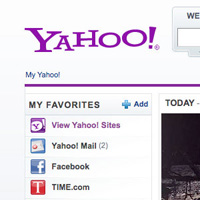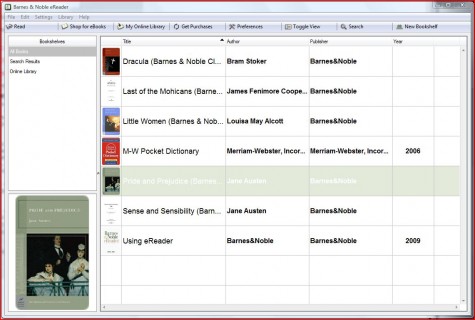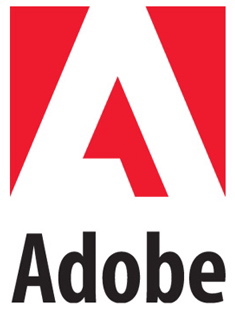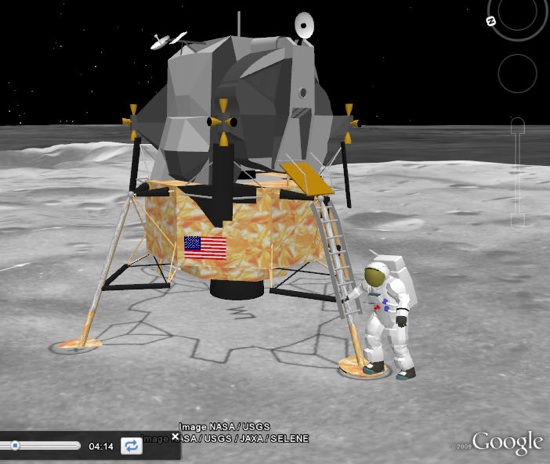
Fourth major US WiMAX deployment launches today
Right on schedule, the latest Clear WiMAX network has launched, bringing 4G wireless coverage to 638 square miles of Sin City. Clearwire detailed its plans for Summer launches in Atlanta and Las Vegas in early May. Today, Clearwire recapitulated its goal to have more than 80 markets covered by the end of 2010, which will include Chicago, Charlotte, Dallas/Fort Worth, Honolulu, Philadelphia, and Seattle before 2009 is out. Networks planned in 2010 include New York, Boston, Washington DC, Houston, and the San Francisco Bay Area.
Coverage in Las Vegas is provided from more than 300 Motorola access points throughout the city and blankets an area with about 1.7 million residents, which balloons by more than 100,000 every January when CES rolls around.

The real meaning behind Microsoft's unexpected Linux kernel drop
The most vivid headline on yesterday's news that Microsoft is releasing various Linux kernel modules under the GNU Public License may not have been the most accurate. That would be InfoWorld's "Linux slips into Microsoft's warm, deadly embrace," which cast an agreeable horror-movie glow over the proceedings.
Fun stuff, but despite Randall C. Kennedy's fine and impassioned argument that this is all an embrace-and-extend plot to allow Hyper-V to feast on the blood of the open-source movement, that's probably not where things are heading.

What's Now: The Yahoo makeover, about a year late
Yahoo begins beta rollout of new front page
Tuesday, July 21, 2009 • After what feels like a Google-length testing period, Yahoo is rolling out access to its fresh-and-widgety front page redesign to US users, to be followed within a week or thereabouts with rollouts in the UK, France, and India. The design features a configurable "my favorites" bar with several dozen applications that can fly out and preview content above the main screen, improved localization, slightly smaller type, and the ubiquitous purple.

Barnes & Noble launches its own e-bookstore
It's an odd time to launch an e-bookstore, in the wake of Amazon's Orwellian book-deletion shenanigans as we are, but Barnes & Noble is jumping in with both feet. The new Barnes & Noble eBookstore launched Monday with over 700,000 titles, leapfrogging it past Amazon's efforts.
The store allows downloads to readers for the iPhone/iPod Touch and the BlackBerry, along with Windows and Mac machines; whatever the reader, it's optimized to the .pdb and .prc file formats. (The readers are free and come with free books -- including, if you register, a Merriam-Webster dictionary, plus access to half a million public-domain books from Google.)

Adobe open sources two more Flash technologies
Adobe Systems has made two new frameworks available on opensource.adobe.com under the Mozilla Public License: Open Source Media Framework (OSMF) and Text Layout Framework (TLF),
OSMF was originally part of the Strobe initiative announced in back in May, which aimed to establish an open standard for custom Flash-based media players. It includes a plug-ins API that allows for third-party advertising and reporting metrics to work alongside the standard video player features such as buffering, dynamic streaming, and video navigation.

Texas Instruments ticks up (sequentially, anyway) in Q2
If you look at Texas Instruments' year-over-year results -- ouch, down 27%. If you look at the numbers sequentially -- hey, up 18%, breaking a five-quarter slide. So, based on what we've all been through over the last year, what would you make of TI's numbers?
Texas Instruments took an optimistic but cautious tone on its earnings call, announcing net earnings of $260 million and an EPS of 20 cents, beating expectations. In addition, the company set forth its first predictions for Q3: revenue of between $2.5 and $2.8 billion, with earnings per share of between 29 and 39 cents.

Microsoft releases Office for Mac SP2, offers free trial of full package
Fourteen months after the previous service pack (and six months after giving the world a peek at Macworld), Microsoft on Monday rolled out Office 2008 for Mac SP2. There's still no sign of the promised Entourage upgrade to Exchange Web Services (EWS), but fans of Office Live Workspace and SharePoint ought to be pleased.
Document Connection, which improves users' ability to work with documents on both of those collaboration platforms, is perhaps the biggest addition in SP2. It engendered not only a major effort to bring Microsoft's current vision of Web-based collaboration into the Mac world, but a push to get Office right with Safari 4. Those improvements are also part of SP2.

Qwest begins rollout of its faster VDSL2 networks
Major US telecommunications company Qwest Communications today launched its highest speed DSL Internet service, based on the VDSL2 standard and promising maximum downstream speeds up to 40 Mbps and upstream speeds of 20 Mbps.
The service is available today in Denver, Tucson, Salt Lake City, and The Twin Cities, and the company says it will continue to roll out the VDSL2 technology in 23 more markets in such states as New Mexico, Oregon, and Washington.

Could Popfly's pop out be game over for Microsoft?
There's a strange foreshadowing in Microsoft naming its social mashup service Popfly. In baseball, pop fly is a ball hit straight up that comes straight down, usually into the catcher's mitt and to an out. Popfly is out, with Microsoft's decision to close down the service on August 24th.
I'm really bugged about the shutdown, because of what it represents:

We won't get 'mooned' again, or, why space still matters
I'll fess up now and admit I'm a space head.
I always have been and, much to my wife's chagrin, probably always will be. I've been heading into my backyard over the last few nights to catch a glimpse of the combined International Space Station/Space Shuttle Endeavour complex as it flies overhead at five miles a second. There isn't a whole lot to see, frankly. Just a white dot that moves through the sky for a couple of minutes before winking out unceremoniously somewhere near my neighbor's maple tree. The kids occasionally come along, if only to make sure I don't get lost in the thorny bushes in the corner of our yard.

RIAA spokesperson denies proclaiming DRM 'dead'
The principal spokesperson for the Recording Industry Association of America -- whose name, for all who are interested, is correctly spelled Jonathan Lamy, not "Larry" -- denied telling an SC Magazine reporter, even off the cuff, that "DRM is dead," calling it a "blatantly inaccurate quote."
Lamy provided Betanews with an excerpt of his actual e-mail with the reporter, Deb Radcliff. As part of a discussion about consumers' continued willingness to bypass digital rights management schemes for digital music, for a story Radcliff was writing for SC, Lamy said, "There is virtually no DRM on music anymore, at least on download services, including iTunes." He went on to state that MP3s today tend to be sold without any DRM included anyway, with the interest of consumers being able to play tracks on any device.

The true mark of Blu-ray's success, a Toshiba player
Toshiba may finally be surrendering to the power of Blu-ray, if anonymous sources to Japanese daily Yomiuri Shimbun are to be believed.
The paper says that Toshiba will release its own Blu-ray player by the end of 2009, a move that would be the clearest call of Blu-ray's success since Toshiba ceased HD DVD production early last year, and ended the long high definition format war.

BD-Live bonus features hit the iPhone
Today, Universal announced that its upcoming Blu-ray title Fast & Furious will include bonus features that can only be accessed through an iPhone/iPod Touch app.
Of the hundreds of titles now available on Blu-ray, only a fraction are furnished with BD-Live bonus material -- that is, bonus material that exploits a player's Internet connectivity and onboard storage. Because the Blu-ray spec wasn't fully complete when Sony launched the format in 2004, it has had to incrementally roll out certain features. When Blu-ray profile 1.1 (or "bonus view") was rolled out, it was given picture-in-picture, and it wasn't until last year that Blu-ray profile 2.0 (or BD-Live) titles began coming out.

Google Earth gets 3D moon maps
While it hasn't been able to get a street view car up there yet, Google has launched Google Earth with 3D moon surface maps to commemorate the 40th anniversary of the first manned lunar expedition. The Google Earth team announced in its blog today that current Google Earth 5.0 users can re-start the program and browse the surface of the moon with layers providing more information about the Earth's largest satellite, and even an Apollo 11 guided tour narrated by Space Journalist Andrew Chaikin and former astronaut Buzz Aldrin.
Google actually announced that it was mapping the surface of the Earth exactly four years ago, on the less ceremonious 36th anniversary of the Apollo 11 moon mission.

Kazaa joins the ranks of law-abiding P2P services
All P2P networks must go "establishment" someday, and today another formerly popular P2P service rended by courtroom battles announced it has turned around. Like P2P pioneer Napster did six years ago, this morning, Kazaa (now with just one capital letter) has come back as www.kazaa.com, a subscription-based music service with all of the "big four" major labels in its corner.
For $19.98 a month, Kazaa.com users get unlimited music downloads on up to three PCs, and unlimited ringtone downloads on one mobile phone, but that's it. The service does not support portability and tracks cannot be moved onto MP3 players.